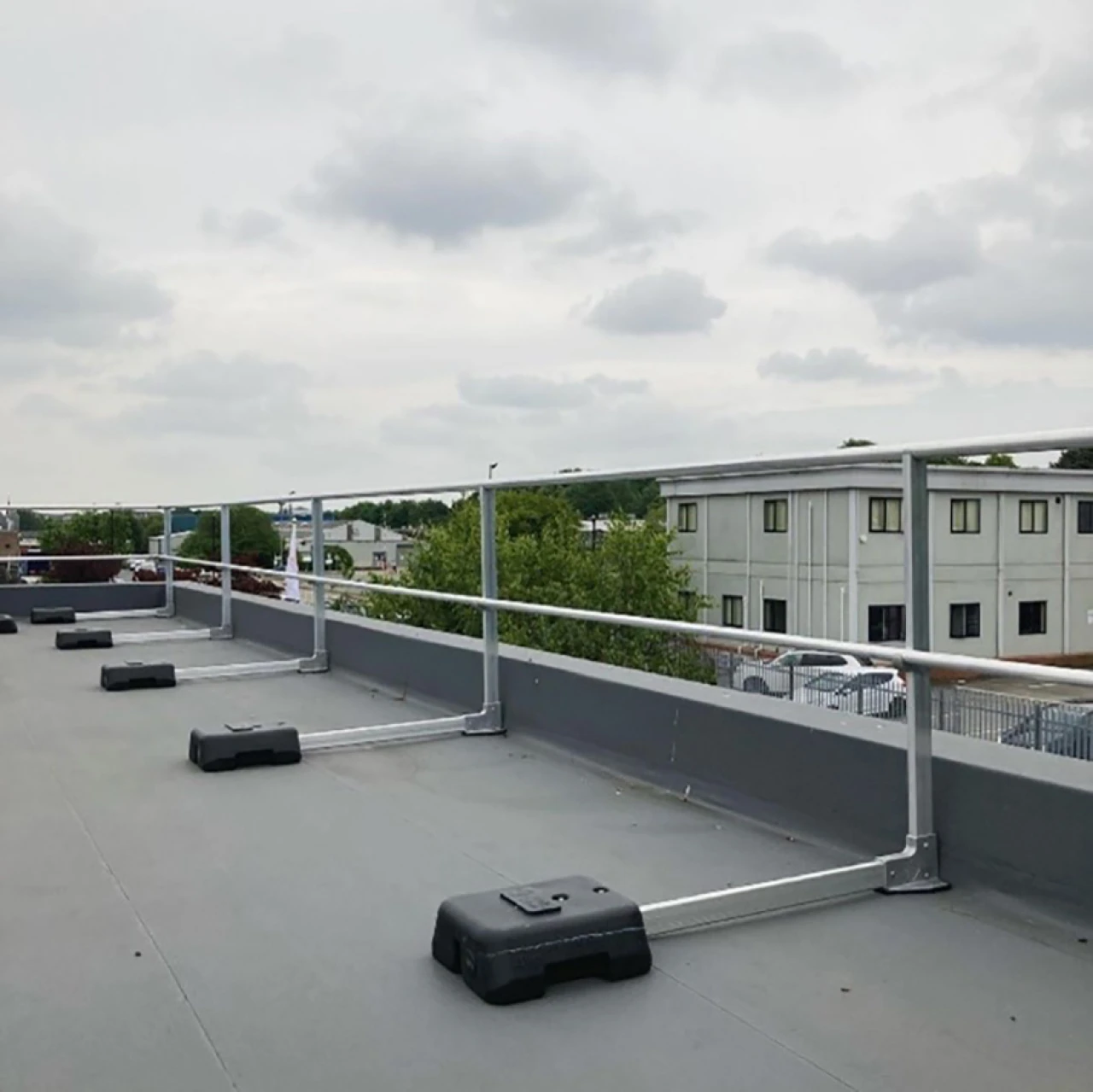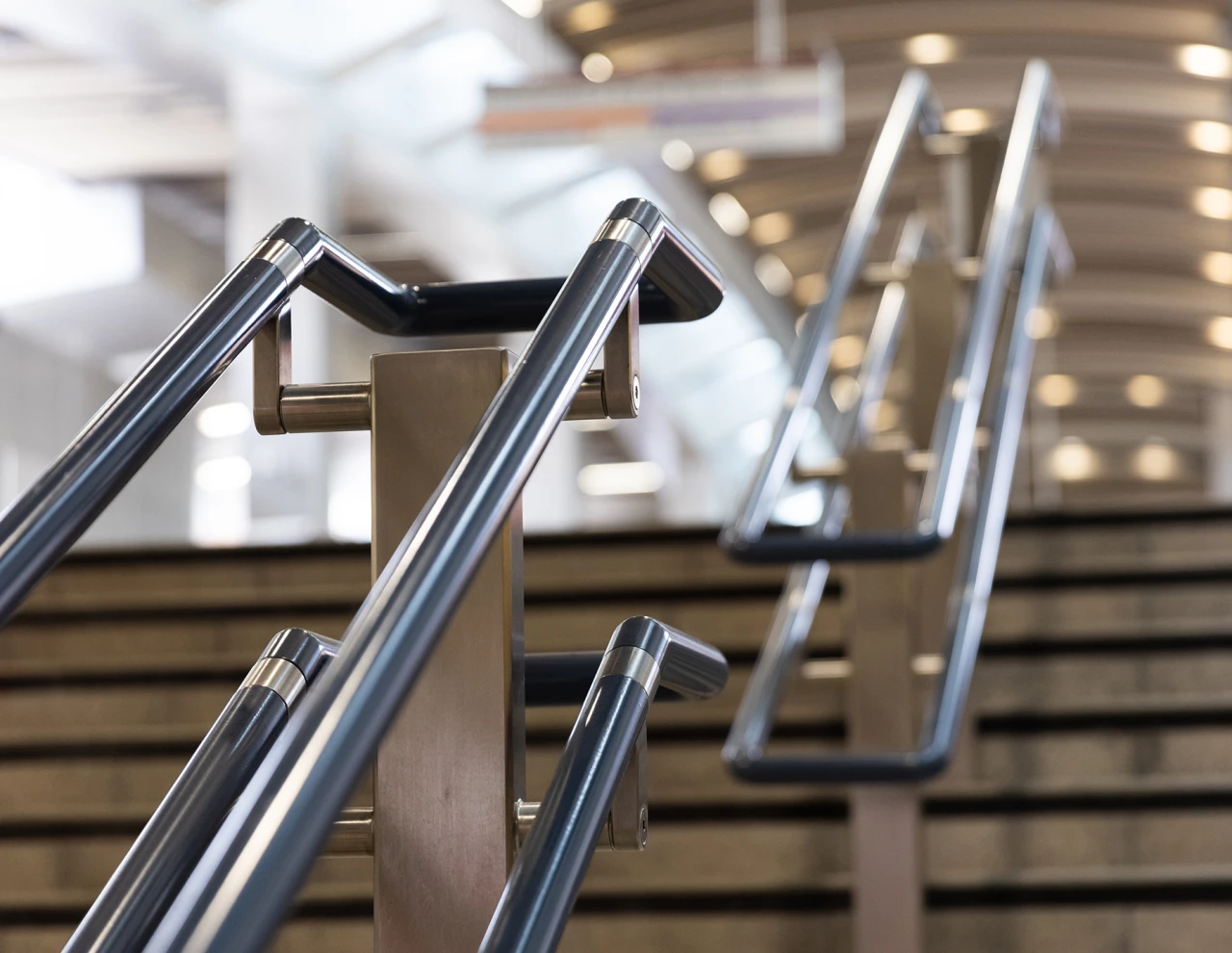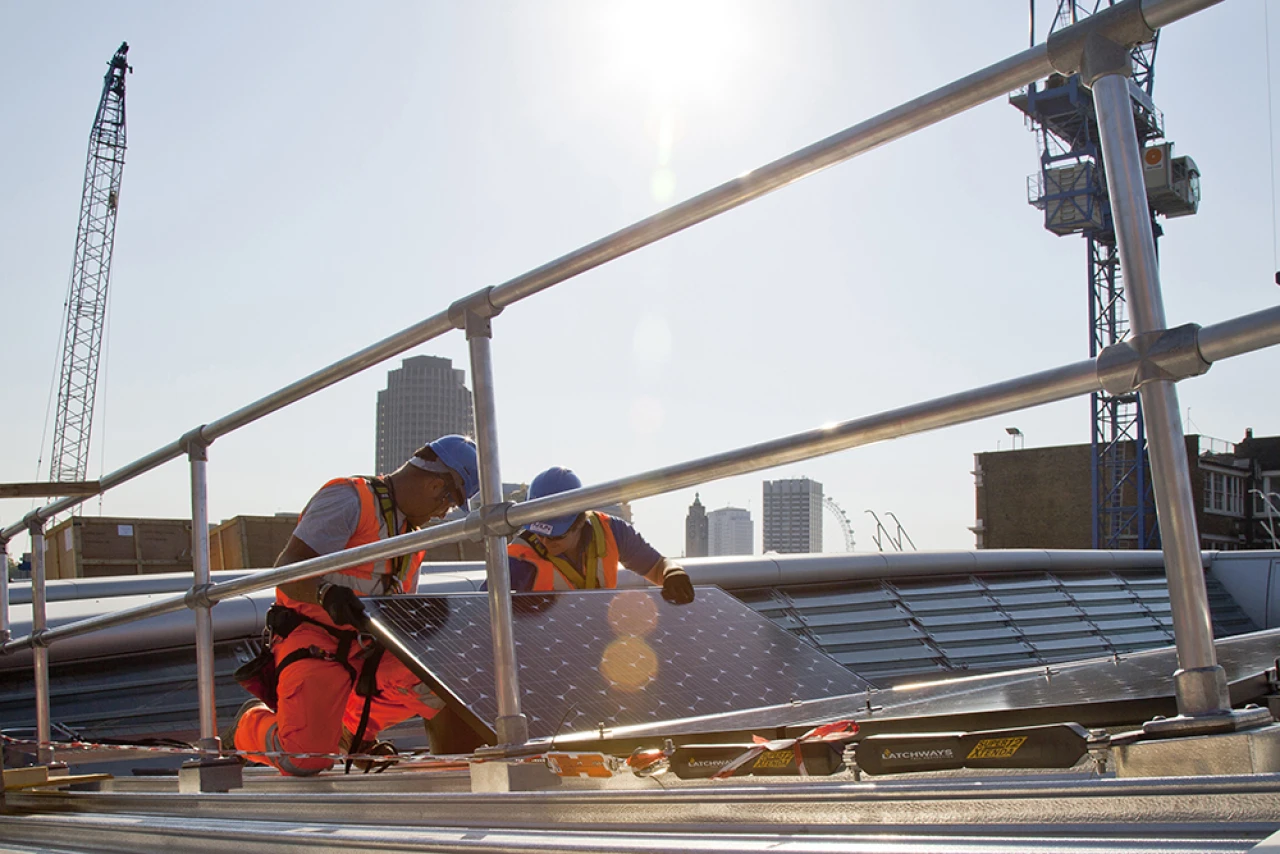

- Knowledge Base
- Blog
- Freestanding guardrail/handrail/balustrade - what’s the difference?
Freestanding guardrail/handrail/balustrade - what’s the difference?
Although these are by definition separate things, it is very common for the names to be mixed up and could sometimes lead to the wrong items being specified. The difference between a roof guardrail and a roof handrail may not seem apparent, but as we will see below, they are technically very different.
Ultimately, through the design process, you will end up with the right system for the application, however, it helps to start off with the correct search terms to ensure you are speaking with the right people to provide the service.
In this blog, we hope to clarify the fundamental differences between the products and detail the benefits and uses of each.
Guardrail
The definition of a guardrail in the English Dictionary is “a bar along the edge of something steep, such as stairs or a cliff, to prevent people from falling off”.
Guardrails are provided primarily to prevent someone from falling from height. They can come in several different forms – fixed or freestanding guardrail – and can be designed to withstand different loadings dependant on the location and type of usage of the area in which they are installed. For this reason, the regulations surrounding the design and installation are very strict and are covered by the following British Standards:
BS6399-1:1996 – Loadings for buildings
BS 13700:2021 – Permanent counterweighted guardrail systems
BS EN 13374:2014 + A1:2018 – Temporary edge protection systems. Product specification. Test methods
BS6180:2011 – Barriers in & about buildings
BS EN ISO 14122-3:2016 – Safety of machinery. Permanent means of access to machinery – stairs, stepladders and guardrails.
Freestanding guardrails can be found in a wide range of places including industrial settings such as roof tops and platforms for maintenance purposes as well as footpaths and balconies used by the general public.

Freestanding guardrail, often referred to as freestanding handrail, is a very popular solution for roof edge protection as it requires no penetrations and can be a very cost-effective solution for existing buildings.
Handrail
The definition of a handrail in the English Dictionary is “a long piece of metal or wood which is fixed near stairs or places where people could slip and fall, and which people can hold on to for support.”

Handrails are provided in areas where people may require assistance and support in going up and down stairs or ramps, generally in a public place such as a shopping centre or train station. In these types of areas, they are likely to be DDA compliant (Disability Discrimination Act) and must therefore incorporate several design features such as a smooth and continuous surface.
Whilst a handrail on a staircase or ramp is there to provide support from a slip, it is not necessarily there to provide protection from a fall, although it does assist in preventing one.
Balustrade
The definition of a balustrade in the English Dictionary is “a set of posts or a screen to prevent people from falling over the edge of stairs, a balcony, etc., often with a wooden, metal, or stone bar on top that you can hold”.
Whilst the ultimate purpose of a balustrade is essentially the same as that of a freestanding guardrail, a balustrade is generally provided when a more architectural and aesthetical product is required. The design and installation of this product is generally to several of the same standards as detailed above for the guardrail, however, the materials used are likely to be different and the loading criteria could be far higher due to the types of places this system may be used in.

Glazed Balustrades are extremely popular in commercial and residential properties due to the sleek and modern appearance of the system, whereas an architectural metalwork balustrade may be the most suitable fit for a period style property.

Which solution is right for me?
We can see that whilst being similar in appearance, there are big differences in the purposes of each of these systems and choosing the right one for the right place is critical.
Selecting a company that can determine your requirements and propose the most suitable product is the first step in ensuring that you are providing the correct level of protection on your project. Here at Eurosafe, we have the knowledge and experience, together with the range of products available to us to make sure that all your requirements can be met.
We provide a full design, supply, and installation service for fixed and freestanding guardrails, as well as glazed or steel balustrade and can help you deliver you project successfully.














